SIR ROBERT HITCHAM’S SCHOOL and FOUNDATION
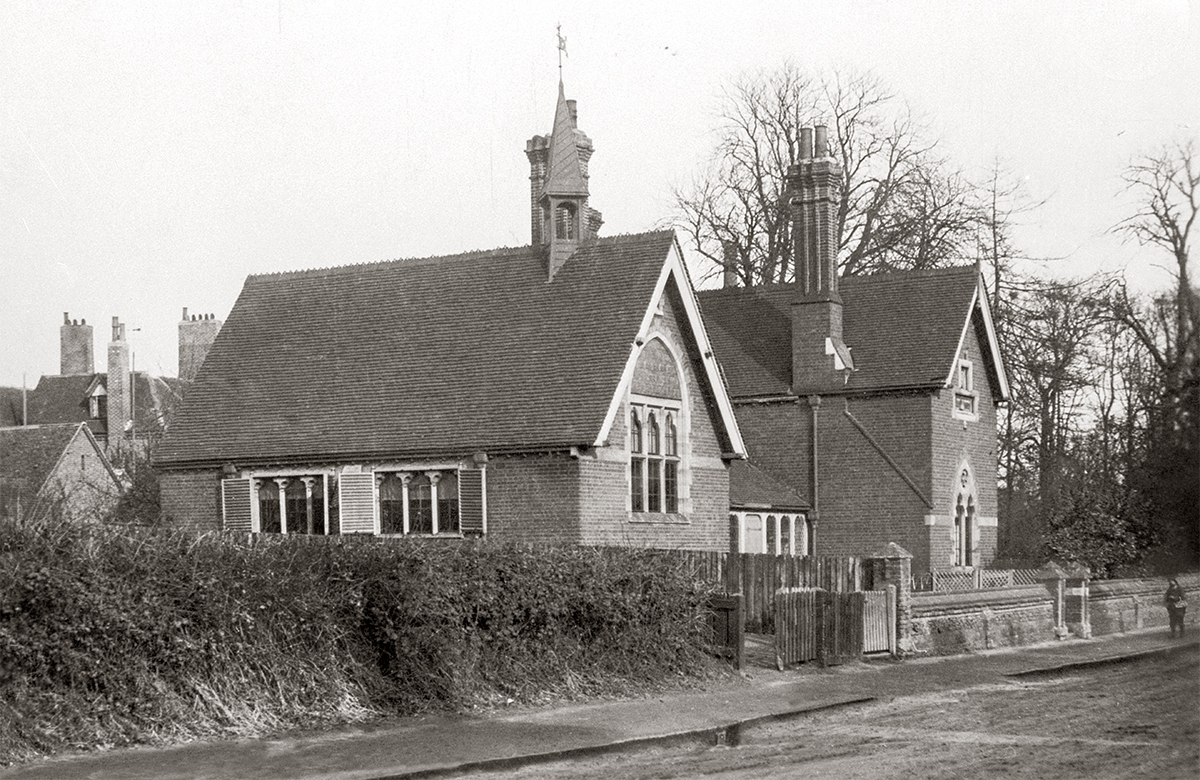
Robert Hitcham was born of lowly origins in Levington, Suffolk. His father and grandfather were itinerant heather cutters and sellers – a material then used to make brooms and brushes. Showing great promise as a child he went on to study law at Pembroke College Cambridge, and eventually became an MP, the King’s Senior Sergeant-at-Law and was knighted in 1604 by King James I, taking up residence at Framlingham Castle. He was possessed of a ‘strong brain and a powerful purse’ as Beaumont put it. Although not a native witnessed and was deeply affected by the destitution of Coggeshall, when visiting his friends here, the Guyon family. On Hitcham’s death in 1636 among several charitable bequests was one to build a school at Framlingham to educate ‘thirty or forty of the poorest and neediest’ children of ‘the towns of Framingham, Debenham and Coxall’. Quite how the poor of Coggeshall might benefit from this is unclear and in practice, very few did. In 1666 the trustees decided among other measures, to provide a school house in Coggeshall itself and to allow a schoolmaster £20 yearly ‘to teach twenty or thirty of the poorest children of Coxall to read, write and cast accounts’.
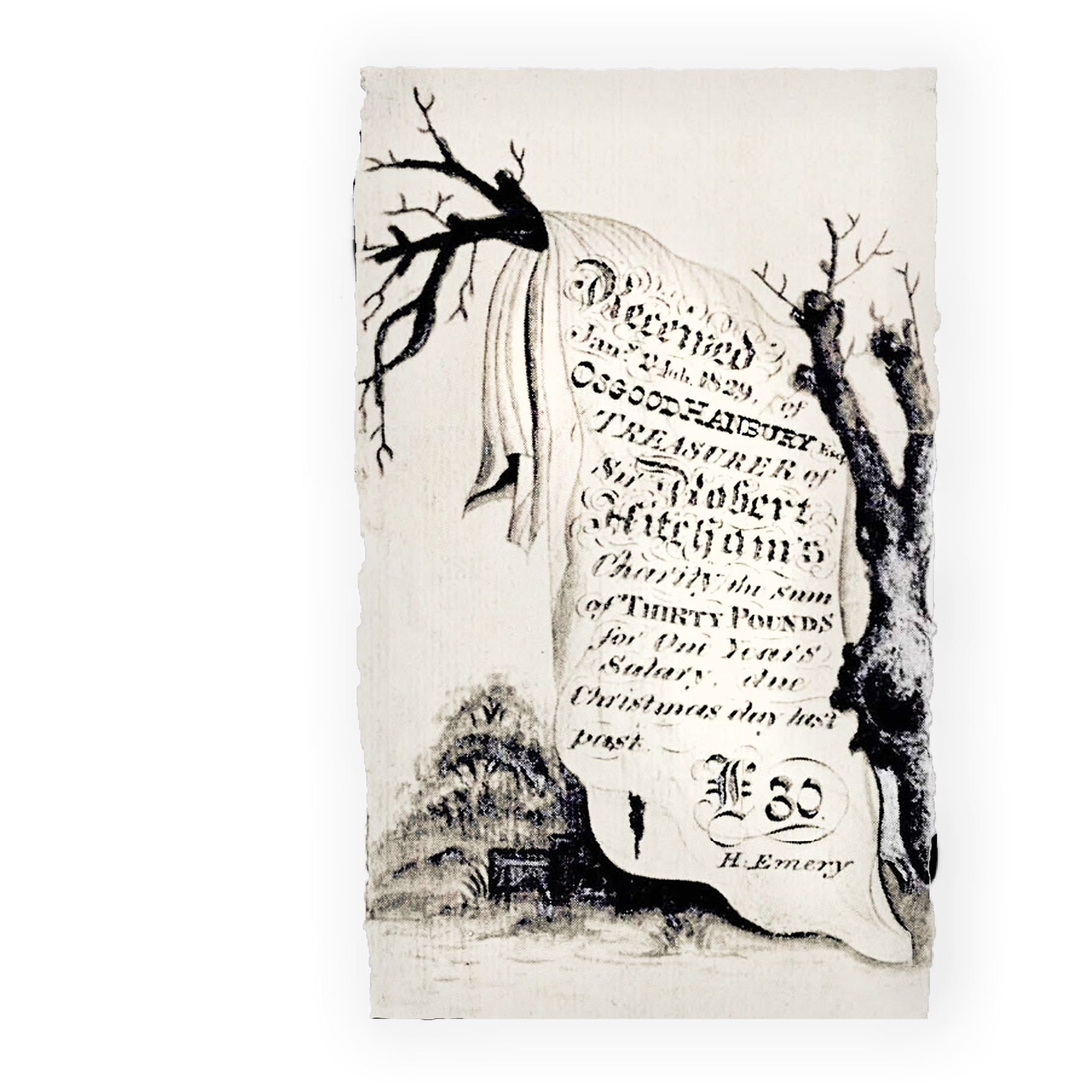
The school assembled for many years at a large upstairs room in Stoneham Street which was next to the town clock where a certain Mr Henry Emery, who died in 1844 aged 78 years, was master of the school for 49 years.
A rather curious receipt from Henry Emery has survived. This acknowleges his annual salary of £30 dated January 1829, ‘Due Christmas Day last’. It is made out to Osgood Hanbury of Holfield Grange who was treasurer to the Robert Hitcham Charity at that time.
The design was taken from the cartouche on the 1777 map of Essex by Chapman and Andre.
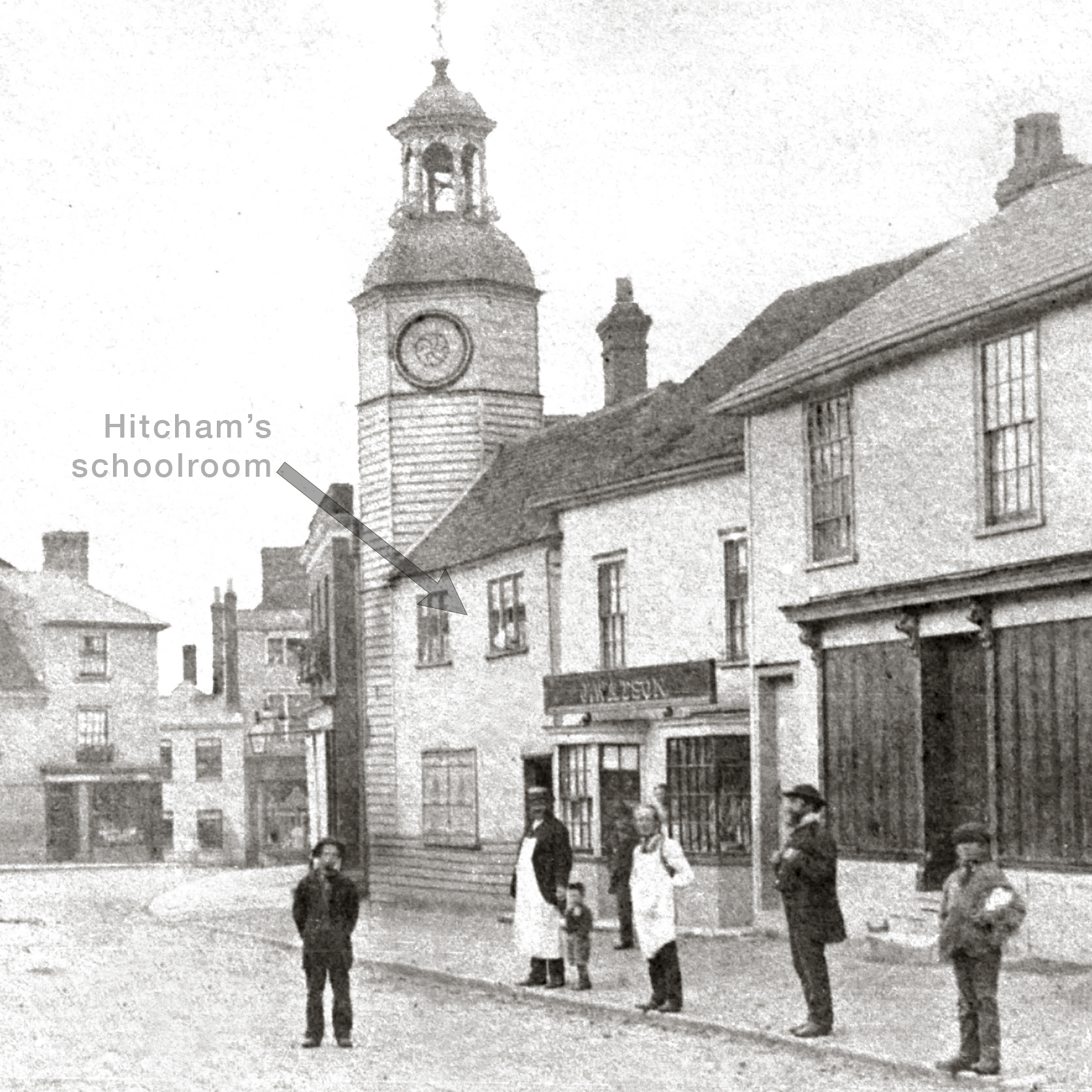
Before William Sutton was appointed master in about 1846 the number of scholars had dwindled to three or four. He was given a stipend of £60 per annum and raised the number of boys from twenty to thirty. He resigned in 1852 when he was earning £80 per annum – an amount described then as a ‘mechanics’ (workmans) wage. It was said that he was ‘forced to resign his post from the mere despair of making and keeping up a respectable school’.
It was said that the upstairs classroom near the clocktower was ‘no better than a stable loft’ and that the trustees had sent Mr Sutton such a regiment of boys, ‘ragged, collarless, many of them without shoes and stockings’ that the more respectable families ‘did not care to send their children there’.
’Sutton’s resignation prompted a flurry of debate. It was clear that the original purpose of the charity ‘to educate ‘the poorest inhabitants’ had been overtaken by the universal education already provided by the National School on Stoneham Street built in 1840.
It was argued that instead the charity should be providing an education for those of all classes who might benefit from it. The arguments proved persuasive and led the trustees at Pembroke College to plan a purpose built school and master’s house.
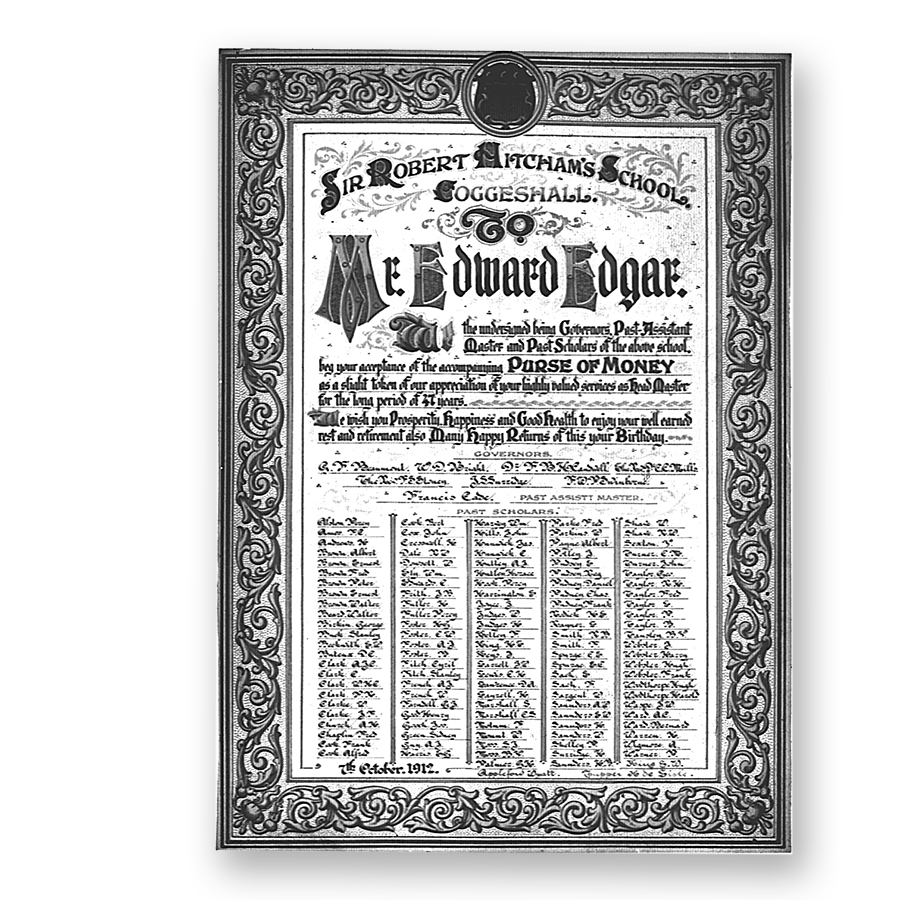
The school building and master’s residence on West Street were built in 1858 on a piece of land owned by Coggeshall church and bought by the charity for £100. This money the vicar then used to buy St Nicholas Chapel which was then used as a barn. The school cost a total of £1,320 and opened on 24th June 1859.
In Beaumont’s time (1880’s) the Tuition Fee was £4 a year but scholarships were awarded from the National School on Stoneham Street and the British School on Queen Street among other schools outside Coggeshall which provided a free education to those with ability but less able to pay the fee.
Mr Thomas Hyde was the first master and he was succeeded in 1863 by the Rev George Horrocks who resigned less than a year later in June 1864. After some temporary appointments Mr Edward Edgar was elected master on 9th January 1865 and this much-loved teacher continued at Hitcham’s until he retired when the school closed in 1912 and he was 75.
Certificate presented to Mr Edward Edgar on his retirement after teaching at the Sir Robert Hitcham School for 47 years on 7th October 1912.
.
At Edward Edgar’s retirement Mr Joseph Surridge, one the Governors, said that old Hitcham boys were scattered throughout the world, and it must be a pleasure for Mr Edgar to see that his work had been appreciated. Mr. F. Cade, formerly assistant master, said that letters had been received from scholars in Borneo, Australia, Canada, the United States, South Africa, Ceylon, China, and New Zealand. They were also celebrating a double event — this was also Mr Edgar’s birthday. He had spent over 15 years with Mr Edgar, and could speak to his strength character, his uprightness, and his desire to give every boy a sound education upon which they could build their character. Superintendent French, of the Metropolitan Police, said Mr Edgar’s tuition was the foundation of his success. He always taught punctuality, discretion, and never to hurry deciding important issue. Mr W Saunders said Mr Edgar was man of strict integrity, great Christian character, and of strict impartiality, and had endeavoured to instill into the minds of the pupils high and lofty ideals. In making the presentation, Mr Ernest Brown said Mr Edgar was a just man and always stood up for the right and presented Mr Edgar with the beautifully illuminated address and a purse of £74.
By 1912 the number of pupils had declined and closure became inevitable. Great changes had taken place in the education system, and with the County High School at Braintree, (opened 1907) and a county supported grammar school at Earls Colne (opened c1890) Hitcham’s could not compete. The plan was to close the school and establish a charitable foundation to provide scholarships for Coggeshall pupils in secondary education.
The parish council objected hoping that the school might reopen but the Board of education pointed out that the dwindling number of pupils meant that the school was unable to carry out it’s charitable remit and that anyway the school was simply no longer needed. The new scheme was finally enacted in September 1913 and the charitable income that supported the school was vested to the ‘Sir Robert Hitcham’s Grammar School Foundation’.
This foundation continues it’s work today as the ‘Sir Robert Hitcham’s Exhibition Foundation’ and awards grants ‘to people under 25 living in Coggeshall who have left school and are going on to higher education or training.’
For inquiries or an application for a grant get in touch with Nic Johnson, Secretary of the Sir Robert Hitcham Exhibition Foundation, e-mail; [email protected] or use the ‘contact’ tab at the top of the page and we will pass on your message.
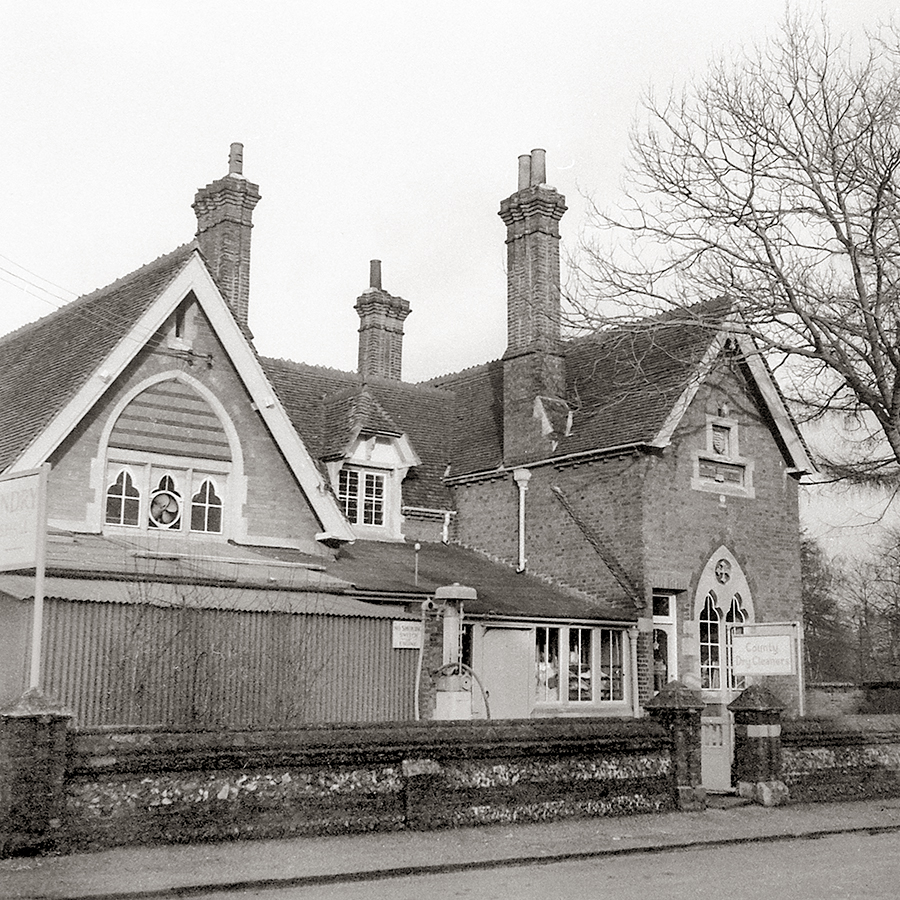
Html Light Grey background ignore this text it is just to increase the picture size
ignore this text it is just to increase the picture size
After the school closed, the building was used for many years by the ‘Coggeshall Steam Laundry’ when the smell of washing and wisps of steam would issue from the place. It’s delivery vans were a common site in the 1960s picking up and delivering laundry to it’s customers and this included bed sheets, terry towelling nappies for babies and the lemon-scented towels you were given after going to a Chinese restaurant. As automatic washing machines became more common the laundry became obsolete and eventually closed down in the 1980s.
Html Light Grey background ignore this text it is just to increase the picture size
ignore this text it is just to increase the picture size
ignore this text it is just to increase the picture size
ignore this text it is just to increase the picture size
ignore this text it is just to increase the picture size
In around 2000 the old building was sensitively restored and some of the later additions and extensions were removed so that the building regained something of it’s original appearance. The old school then found a new purpose as small business centre.